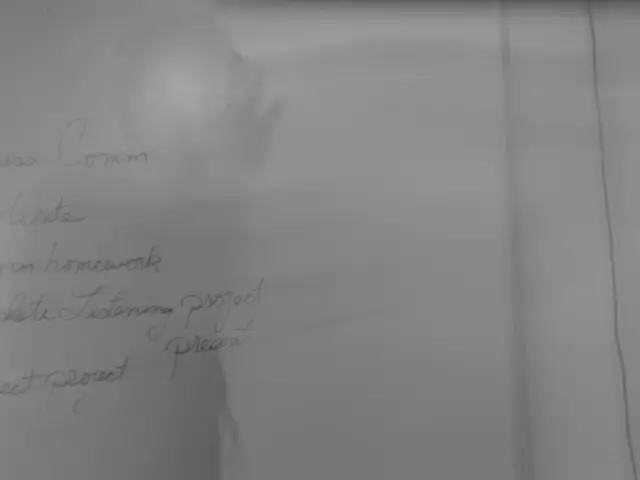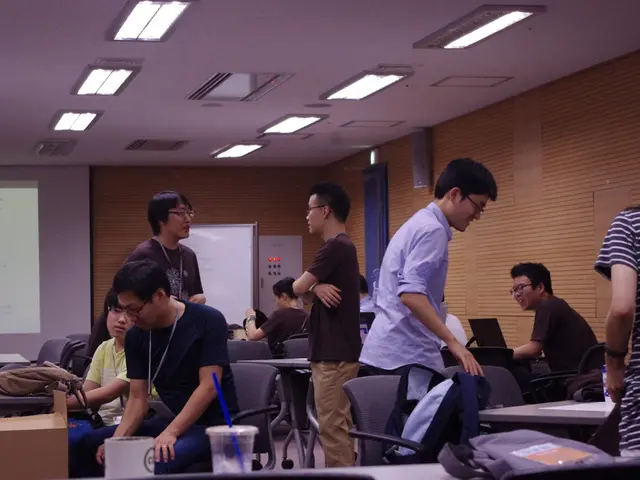American universities are facing a crisis: budget cuts, cultural disputes, and declining enrollment are pushing them towards the brink of collapse.
The end is nigh for America's conventional university model, as we've known it since the 1960s. A wave of college closures and consolidations began 15 years ago, and it's set to intensify over the next few years.
College enrollments peaked in 2010, but have since dropped consistently due to rising college costs, the pandemic, and other trends. However, recent crackdowns on campus protests, the hostile climate against Diversity, Equity, and Inclusion (DEI), and the US government's persecution of foreign students have added to the woes of American universities.
Sonoma State University (California State Sonoma) is one such institution grappling with a budget deficit of $24m. Although a Sonoma County court ruling momentarily halted their plans, the University may still negotiate with staff, faculty, and students to eliminate up to 22 majors, 6 departments, and over 100 faculty positions, primarily from liberal arts and social sciences.
West Virginia University undertook the most extensive retrenchment in the past decade in 2023. After a six-year effort to boost enrollment, the University reported a $45m budget deficit, and enrollment dipped from approximately 29,000 in 2017 to just under 26,000 in 2023. The austerity plan was to cut 32 majors and 169 faculty positions, including foreign language programs and math doctoral programs.
Student protests followed, and the number of affected majors and faculty positions reduced to 28 and 143, respectively. This sudden shift towards austerity has resulted in a steady exodus of faculty and administrators from West Virginia.
Institutions like Sonoma State and West Virginia aren't alone. The gender enrollment gap in higher education reveals a more significant issue. While women's college enrollment has increased steadily over the past 50 years, men's attendance, particularly among white men, has declined drastically since 1970. Approximately 71% of the overall decline in college attendance since 2010 can be attributed to the decreasing number of male students. While this trend may be partially explainable by sexism masquerading as disinterest in higher education in an increasingly female-dominated student body, other factors may be at play.
Unfortunately, many higher education institutions face an even bleaker future. Clarion University of Pennsylvania, California University of Pennsylvania, The College of Saint Rose in New York, and Independence University in Utah are among the 76 colleges and universities that have closed or merged, affecting tens of thousands of students and several thousand faculty members. These institutions have primarily cited budget shortfalls and lower enrollments as reasons for their demise or mergers.
Nationally, college enrollment fell from a high of 18.1 million students in 2010 to 15.4 million in 2021, with a drop of 350,000 students following the first year of the pandemic. Enrollment climbed to 15.9 million students by the fall of 2021, a 4.5% increase, but not enough to halt the tide of closures, austerity, and consolidations.
The Federal Reserve Bank of Philadelphia's financial stress test model for American higher education institutions predicts that as many as 80 colleges and universities in the U.S. could close by the end of the 2025-26 school year, based on the worst-case scenario of a 15% decline in enrollment. Demographers also foresee an imminent drop in college enrollees starting this fall, a consequence of the economic distress sparked by the Great Recession of the late-2000s[6].
The Trump administration's harsh treatment of foreign college students has also threatened the one area of growth in higher education. The recent crackdowns on academic freedom, particularly pro-Palestinian college faculty and students, under former President Joe Biden, as well as under mostly Republican governors like Greg Abbott in Texas and Ron DeSantis in Florida over Critical Race Theory (CRT) and DEI, have intensified under President Donald Trump. The Trump administration's moves to revoke the visas of more than 1,700 foreign faculty and students, and expel many others, mainly due to pro-Palestine activism and political stances deemed against the administration's interests, pose a significant threat to international student enrollment from the Middle East and South Asia in the coming years.
In 2023-24, more than 1.1 million international students attended U.S. colleges and universities at the undergraduate, graduate, and professional levels. However, the Trump administration's menacing posture towards foreign students and scholars puts international student enrollment from the Middle East and South Asia at risk in the coming year. Enrollment from China may also decrease due to ongoing trade tensions between the two nations. One-quarter of all foreign students in the U.S. are from China.
For decades, American universities have relied on armies of part-time professors instead of full-time, tenure-stream instructors and researchers. College presidents have run their campuses like for-profit businesses, which has made the erosion of American higher education almost inevitable. Despite Harvard's recent challenge to the Trump administration's repression of colleges and universities, the top-down hierarchies and disempowered workforce have left higher education powerless to withstand conservative and far-right movements in the U.S. The liberal arts fields, often seen as "immoral," "indoctrination," and "libtards" by conservatives, are particularly vulnerable to consolidation as a cost-saving measure. The privatization of the federal student loan program proposed by Trump's Project 2025 team would likely be the final straw for American higher education at this point.
Liberal arts departments will likely continue to consolidate, or university administrators will find reasons to eliminate them as a cost-saving measure. Senior faculty will take severance pay, early retirement, or be terminated. Non-tenured faculty and junior staff will face unemployment and, in many cases, joblessness in the shrinking U.S. higher education landscape. Many students outside the top 136 elite universities or the top 50 flagship public colleges and universities may be unable to afford college, with tens of thousands unable to complete their degrees. American higher education is not just peering into the abyss – it has already fallen into it.
- The severance of traditional university models in America, evident since the 1960s, is predicted to continue intensifying, with as many as 80 institutions projected to close by 2025-26, as per the Federal Reserve Bank of Philadelphia's financial stress test model.
- The wave of college closures and consolidations is rooted in factors like rising college costs, the pandemic, and a decreasing emphasis on liberal arts and social sciences, as seen in institutions like Sonoma State University and West Virginia University.
- In the face of declining male enrollment, particularly among white men, there's an ongoing debate about the overemphasis on general-news topics like politics, war, and business, and the subsequent underrepresentation of education and self-development in curricula.
- The Trump administration's hostile policies towards foreign students, along with campaigns against academic freedom and pro-Palestinian faculty members, have significantly impacted international student enrollment, particularly from the Middle East and South Asia.
- The privatization of the federal student loan program, as proposed by Trump's Project 2025 team, could serve as the final blow to an already struggling higher education system, leaving many students unable to afford college and complete their degrees.
- The shift toward austerity measures in universities, coupled with the rise of part-time professors and top-down hierarchies, has left the academic workforce disempowered and vulnerable to conservative and far-right movements, with liberal arts departments being primarily targeted for consolidation.





